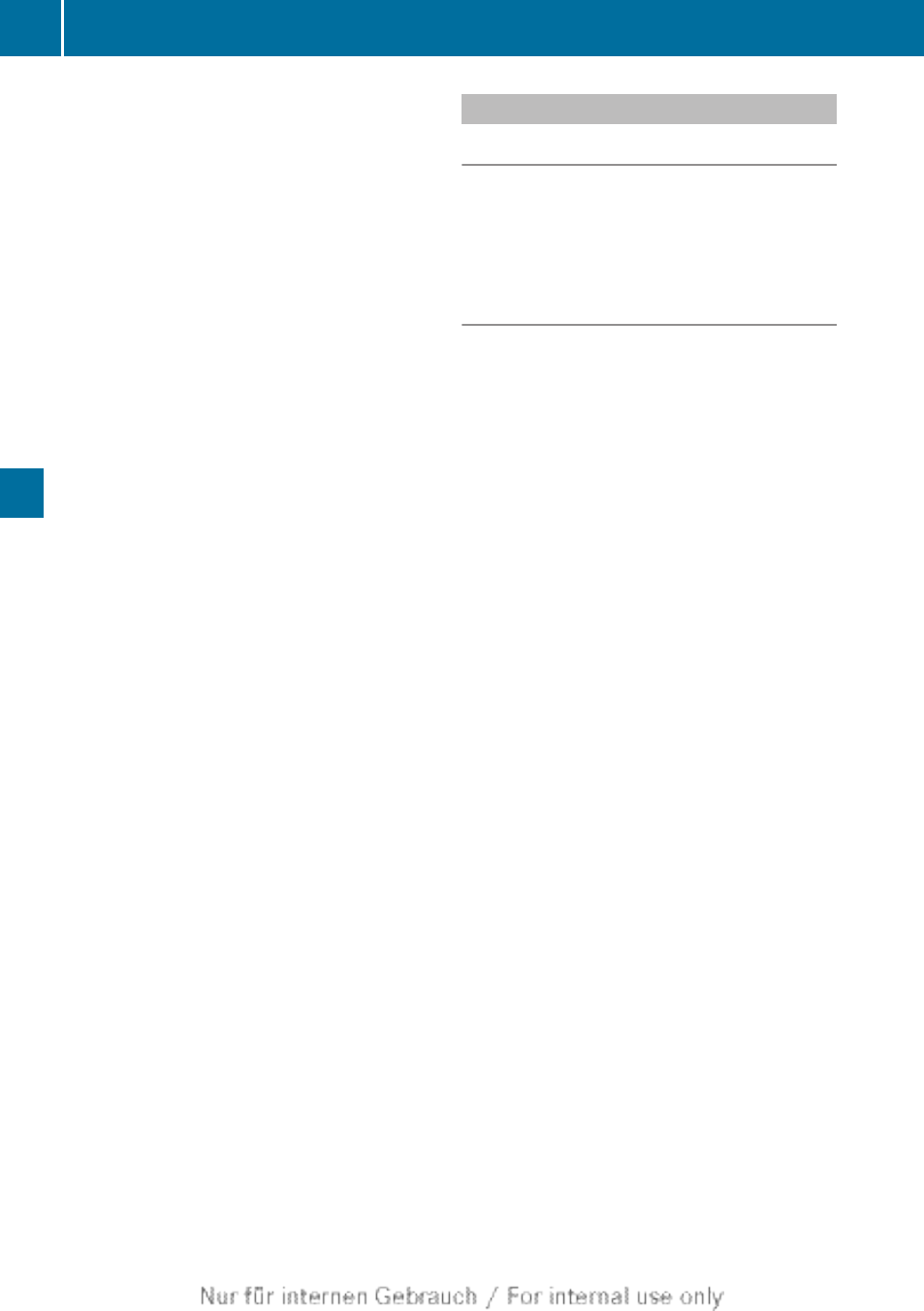Active driving assistance package, Driving and parking, Driving systems – Mercedes-Benz 2013 C Class Sedan User Manual
Page 192

symbol : is shown in green. Lane Keeping
Assist is ready for use.
Standard
If
Standard
is selected, no warning vibration
occurs if:
R
you switch on the turn signals. In this event,
the warnings are suppressed for a certain
period of time.
R
a driving safety system intervenes, such as
ABS, BAS or ESP
®
.
Adaptive
If
Adaptive
is selected, no warning vibration
occurs if:
R
you switch on the turn signals. In this event,
the warnings are suppressed for a certain
period of time.
R
a driving safety system intervenes, e.g.
ABS, BAS or ESP
®
.
R
you accelerate hard, e.g. kickdown.
R
you brake hard.
R
you steer actively, e.g. swerve to avoid an
obstacle or change lanes quickly.
R
you cut the corner on a sharp bend.
In order that you are warned only when
necessary and in good time if you cross the
lane marking, the system recognizes certain
conditions and warns you accordingly.
The warning vibration occurs earlier if:
R
you approach the outer lane marking on a
bend.
R
the road has very wide lanes, e.g. a
highway.
R
the system recognizes solid lane markings.
The warning vibration occurs later if:
R
the road has narrow lanes.
R
you cut the corner on a bend.
Active Driving Assistance package
General notes
The Active Driving Assistance package
consists of DISTRONIC PLUS (
Active Lane Keeping Assist (
Active Blind Spot Assist
General notes
Active Blind Spot Assist uses a radar sensor
system to monitor the side areas of your
vehicle which are behind the driver. A warning
display in the exterior mirrors draws your
attention to vehicles detected in the
monitored area. If you then switch on the
corresponding turn signal to change lane, you
will also receive an optical and audible
warning. If a risk of lateral collision is
detected, corrective braking may help you
avoid a collision. To support the course-
correcting brake application, Active Blind
Spot Assist uses the forward-facing radar
sensor system. The space available in the
direction of travel as well as to the side of the
vehicle is evaluated before a course-
correcting braking application is performed.
Active Blind Spot Assist supports you from a
speed of approximately 20 mph (30 km/h).
For Active Blind Spot Assist to assist you
when driving, the radar sensor system must
be:
R
R
operational
Important safety notes
Active Blind Spot Assist is only an aid. It does
not detect all traffic situations and road users
and is no substitute for attentive driving.
Always ensure that there is sufficient
distance to the side for other road users and
obstacles.
190
Driving systems
Driving and parking